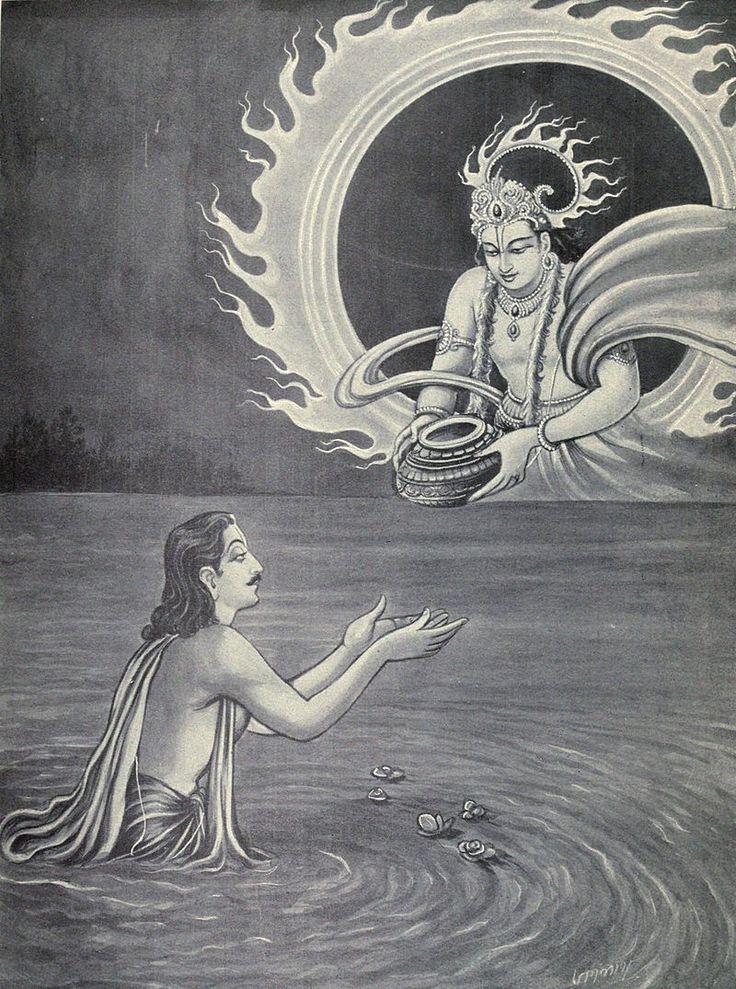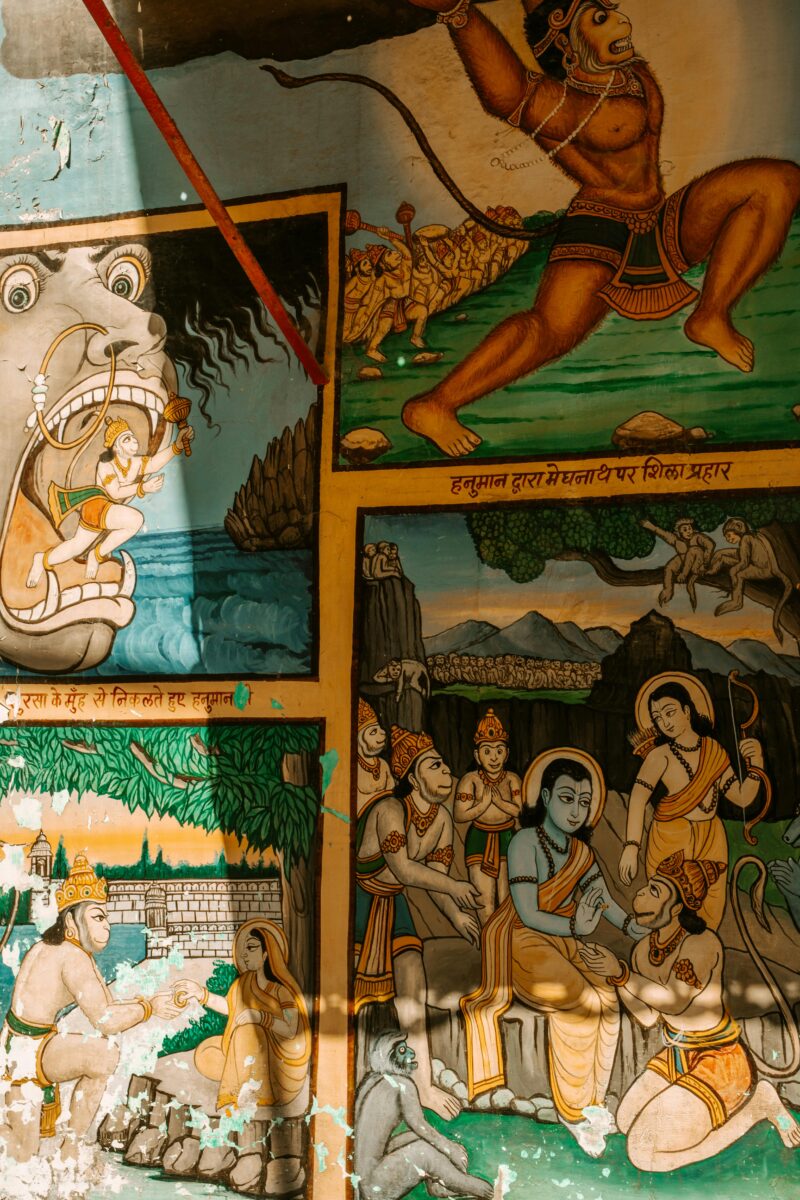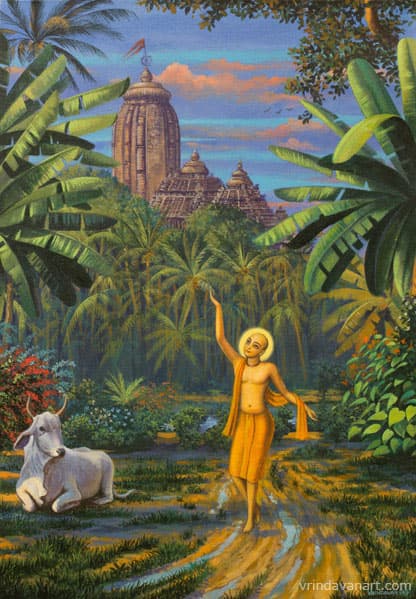Practically every one of his books, Śrīla Prabhupāda quotes the Hare Kṛṣṇa Mahāmantra. Why? Because this divine sound vibration is not just a sacred formula—it is the universal solution.
We often seek different answers for different problems. But bhakti teaches us that there is one root problem—forgetfulness of Kṛṣṇa—and one eternal solution: remembering Him through His name. Whether our struggles are internal or external, spiritual or material, the name of the Lord is the gateway to transcendence.
Lord Caitanya Mahāprabhu boldly declared:
“There is no hard or fast rule in chanting. Everything is accomplished by taking shelter of the holy name.”
Śrīla Prabhupāda put it simply:“Chanting means meditating on Kṛṣṇa.”
This is not a poetic idea; it is a spiritual science. The more we chant, the more our mind is drawn toward the Supreme Lord. Our attention moves away from distraction and returns to its rightful center. In this way, chanting becomes meditation. And meditation becomes absorption.
This process is natural, and beautifully outlined in our scriptures:
śravaṇaṁ, kīrtanaṁ, smaraṇaṁ—hearing, chanting, and remembering.
We begin with śravaṇam—hearing. That hearing inspires kīrtanam—chanting and glorifying the Lord. Through that kīrtana, smaraṇam—remembrance—awakens within. And this remembrance is the seed of meditation.
In Nectar of Instruction, Śrīla Rūpa Gosvāmī describes the five stages of smaraṇam, showing how a simple act of hearing can culminate in the highest stage of samādhi. Here are those five stages:
1. Śravaṇa-daśā – The Stage of Hearing
This is where the journey begins. We hear about the Lord—His names, His qualities, His pastimes. That hearing enters the heart and leaves an impression. Even if faint at first, it gradually leads to remembrance. Hearing is not passive—it is the planting of the seed of bhakti.
2. Varṇa-daśā – The Stage of Acceptance
After hearing, a desire awakens to live what we’ve heard. We begin to speak of Kṛṣṇa, to chant His names, to align our thoughts and actions with His teachings. “Varṇa” here means expression and adoption—His presence starts reflecting in our life.
3. Smaraṇa-daśā – The Stage of Deep Remembrance
Now the remembrance becomes stronger and more consistent. The Lord is no longer a distant idea. He becomes part of our daily thought process, influencing our actions and decisions. Our mind naturally turns to Him again and again.
4. Āpana-daśā – The Stage of Internalization
Remembrance is no longer effortful. It becomes spontaneous, flowing like breath. Kṛṣṇa lives in the bloodstream of our consciousness. Even when busy with worldly tasks, our heart remains with Him. One no longer thinks, “Let me remember the Lord”—He is simply there.
5. Sampatti-daśā – The Stage of Fulfilment (Dhyāna and Samādhi)
This is the highest stage—when remembrance becomes unbroken.
Here, the devotee enters dhyāna—constant meditation—and ultimately samādhi—complete absorption. The mind no longer wanders. The senses no longer distract. The soul is immersed, fully present with the Lord.
In samādhi, even when you’re not chanting, you are still with Kṛṣṇa. You walk, speak, eat, sleep—and the remembrance of the Lord never leaves. The boundary between daily life and spiritual life dissolves. Everything becomes one seamless offering.
Śrīla Prabhupāda expressed it perfectly:
“When real meditation begins, your whole life becomes meditation.”
This is the path of bhakti—a sacred unfolding that begins with hearing and matures into absorption. It is not a dry ritual, nor a temporary phase. It is a progressive transformation of the heart.
From śravaṇam to kīrtanam,from remembrance to surrender,from practice to perfection,
we walk a path where the Lord becomes our very breath, our goal, and our companion.
This is not about withdrawing from the world. It is about inviting the Lord into every step of our life—until life itself becomes an uninterrupted act of devotional remembrance.
So let us begin with śravaṇa,remain steady in kīrtana,and enter the sacred realm of smaraṇa—
until we are carried by grace to samādhi.
That is our path. That is our destiny.









